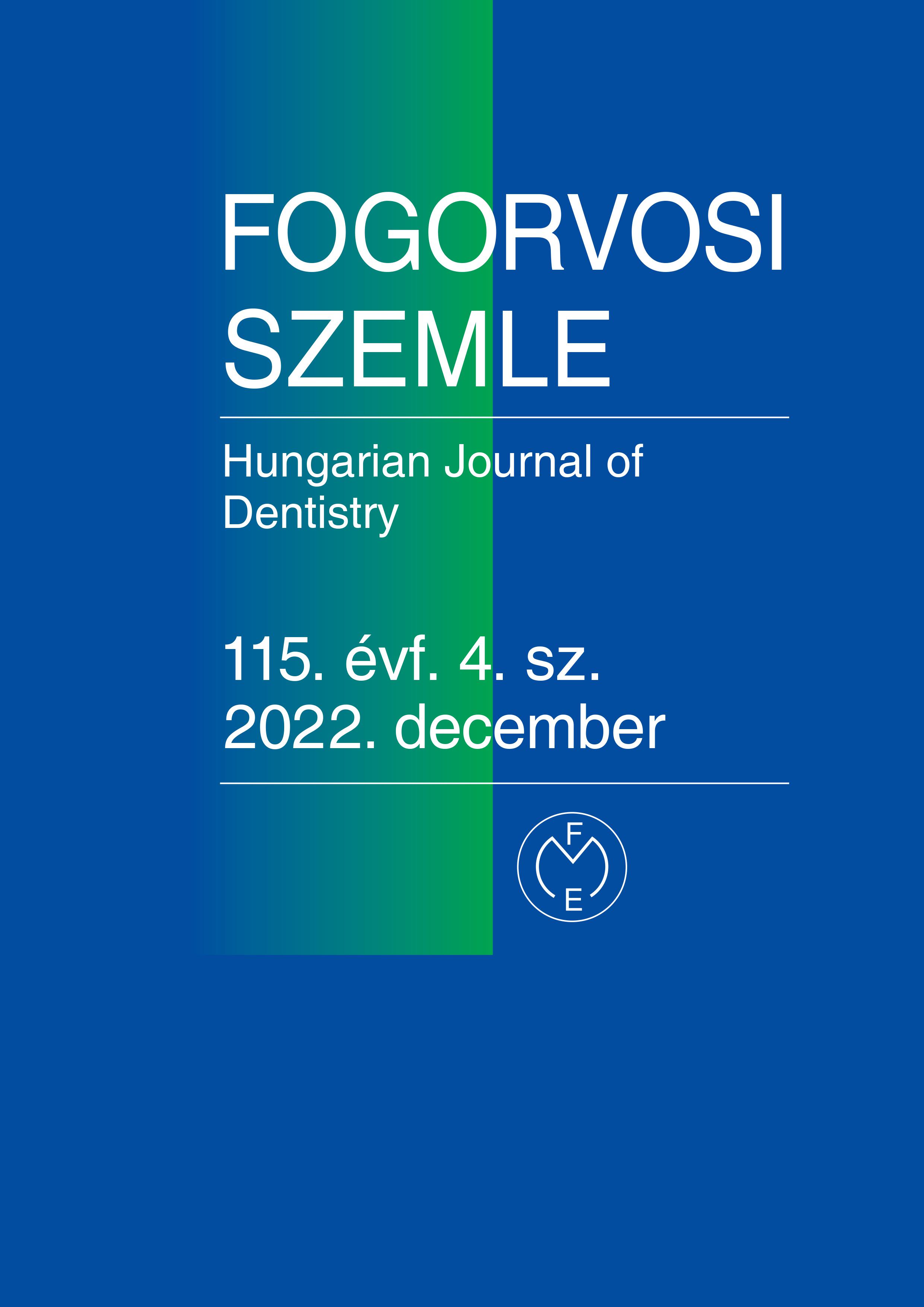Comparing Fracture Resistance of Monolithic Zirconia Crowns Designed with three Different Thicknesses: An In Vitro Study
Abstract
A limited available inter-occlusal space has always been a challenge for many dental practitioners, which hinders
acquiring aesthetic restorations while conserving the remaining dental structure.
This research aims to analyze the relationship between the occlusal thickness of second-generation CAD/CAM
monolithic zirconia restorations, and their fracture resistance, in order to determine the feasibility of reducing the occlusal
thickness – particularly in the posterior oral area, where a limited inter-occlusal space is usually available, and high biting
forces are usually applied.
Thirty monolithic zirconia crowns were made using second generation zirconia block with different design settings
that divided them into 3 groups (n = 10) according to the occlusal thickness of the restorations: Group A: 2 mm, Group B:
1.5 mm, Group C: 1 mm.
Thirty designed crowns were cemented to extracted prepared natural upper premolars using glass ionomer cement,
then they were tested.
Fracture resistance of the monolithic zirconia crowns was significantly influenced by the occlusal thickness, the resistance
improved steadily as the thickness increased.
Nevertheless, the occlusal thickness could be reduced down to 1 mm and the monolithic zirconia restoration would
still own sufficient resistance to tolerate the maximum natural human biting loads of the posterior oral regions.
References
Kern F, Reveron H, Chevalier J, Gadow R. Mechanical behaviour of extremely tough TZP bioceramics. J Mech Behav Biomed Mater. 2019 Feb;90:395-403. https://doi.org/10.1016/j.jmbbm.2018.11.001
Shahmiri R, Standard OC, Hart JN, Sorrell CC. Optical properties of zirconia ceramics for esthetic dental restorations: A systematic review. J Prosthet Dent. 2018 Jan;119(1):36-46. https://doi.org/10.1016/j.prosdent.2017.07.009
Kisi EH, Howard CJ. Crystal Structures of Zirconia Phases and their Inter-Relation. Key Eng Mater. 1998 Feb;153-154:1-36. https://doi.org/10.4028/www.scientific.net/KEM.153-154.1
Güth J-F, Stawarczyk B, Edelhoff D, Liebermann A. Zirconia and its novel compositions: What do clinicians need to know? Quintessence Int Berl Ger 1985. 2019;50(7):512-20. https://doi.org/10.3290/j.qi.a42653
Zhang Y, Lawn BR. Novel Zirconia Materials in Dentistry. J Dent Res. 2018 Feb;97(2):140-7. https://doi.org/10.1177/0022034517737483
Zhang F, Inokoshi M, Batuk M, Hadermann J, Naert I, Van Meerbeek B, et al. Strength, toughness and aging stability of highly-translucent Y-TZP ceramics for dental restorations. Dent Mater Off Publ Acad Dent Mater. 2016 Dec;32(12):e327-37. https://doi.org/10.1016/j.dental.2016.09.025
Stawarczyk B, Keul C, Eichberger M, Figge D, Edelhoff D, Lümkemann N. Three generations of zirconia: From veneered to monolithic. Part II. Quintessence Int Berl Ger 1985. 2017;48(6):441-50. https://doi.org/10.3290/j.qi.a38157
Stawarczyk B, Ozcan M, Hallmann L, Ender A, Mehl A, Hämmerlet CHF. The effect of zirconia sintering temperature on flexural strength, grain size, and contrast ratio. Clin Oral Investig. 2013 Jan;17(1):269-74. https://doi.org/10.1007/s00784-012-0692-6
Jasim HH, Findakly MB, Mahdi NA, Mutar MT. Effect of Reduced Occlusal Thickness with Two Margin Designs on Fracture Resistance of Monolithic Zirconia Crowns. Eur J Dent. 2020 Mar;14(2):245-9. https://doi.org/10.1055/s-0040-1709342
Nordahl N, Vult von Steyern P, Larsson C. Fracture strength of ceramic monolithic crown systems of different thickness. J Oral Sci. 2015 Sep;57(3):255-61. https://doi.org/10.2334/josnusd.57.255
Elsayed A, Meyer G, Wille S, Kern M. Influence of the yttrium content on the fracture strength of monolithic zirconia crowns after artificial aging. Quintessence Int Berl Ger 1985. 2019;50(5):344-8. https://doi.org/10.3290/j.qi.a42097
Tang YL, Kim J-H, Shim J-S, Kim S. The effect of different cooling rates and coping thicknesses on the failure load of zirconia-ceramic crowns after fatigue loading. J Adv Prosthodont. 2017 Jun;9(3):152-8. https://doi.org/10.4047/jap.2017.9.3.152
Kontonasaki E, Rigos AE, Ilia C, Istantsos T. Monolithic Zirconia: An Update to Current Knowledge. Optical Properties, Wear, and Clinical Performance. Dent J. 2019 Sep 2;7(3):E90. https://doi.org/10.3390/dj7030090
Alraheam IA, Donovan T, Boushell L, Cook R, Ritter AV, Sulaiman TA. Fracture load of two thicknesses of different zirconia types after fatiguing and thermocycling. J Prosthet Dent. 2020 Apr;123(4):635-40. https://doi.org/10.1016/j.prosdent.2019.05.012
Hidaka O, Iwasaki M, Saito M, Morimoto T. Influence of clenching intensity on bite force balance, occlusal contact area, and average bite pressure. J Dent Res. 1999 Jul;78(7):1336-44. https://doi.org/10.1177/00220345990780070801
Sun T, Zhou S, Lai R, Liu R, Ma S, Zhou Z, et al. Load-bearing capacity and the recommended thickness of dental monolithic zirconia single crowns. J Mech Behav Biomed Mater. 2014 Jul;35:93-101. https://doi.org/10.1016/j.jmbbm.2014.03.014
Sorrentino R, Triulzio C, Tricarico MG, Bonadeo G, Gherlone EF, Ferrari M. In vitro analysis of the fracture resistance of CAD-CAM monolithic zirconia molar crowns with different occlusal thickness. J Mech Behav Biomed Mater. 2016 Aug;61:328-33. https://doi.org/10.1016/j.jmbbm.2016.04.014
Nakamura K, Ankyu S, Nilsson F, Kanno T, Niwano Y, Vult von Steyern P, et al. Critical considerations on load-to-failure test for monolithic zirconia molar crowns. J Mech Behav Biomed Mater. 2018 Nov;87:180-9. https://doi.org/10.1016/j.jmbbm.2018.07.034
Zimmermann M, Ender A, Mehl A. Influence of CAD/CAM Fabrication and Sintering Procedures on the Fracture Load of Full-Contour Monolithic Zirconia Crowns as a Function of Material Thickness. Oper Dent. 2020 Apr;45(2):219-26. https://doi.org/10.2341/19-086-L
Hamza TA, Sherif RM. Fracture Resistance of Monolithic Glass-Ceramics Versus Bilayered Zirconia-Based Restorations. J Prosthodont Off J Am Coll Prosthodont. 2019 Jan;28(1):e259-64. https://doi.org/10.1111/jopr.12684
Burke FJ. Maximising the fracture resistance of dentine-bonded all-ceramic crowns. J Dent. 1999 Mar;27(3):169-73. https://doi.org/10.1016/S0300-5712(98)00050-5
Copyright (c) 2022 Authors

This work is licensed under a Creative Commons Attribution 4.0 International License.


.png)




1.png)



